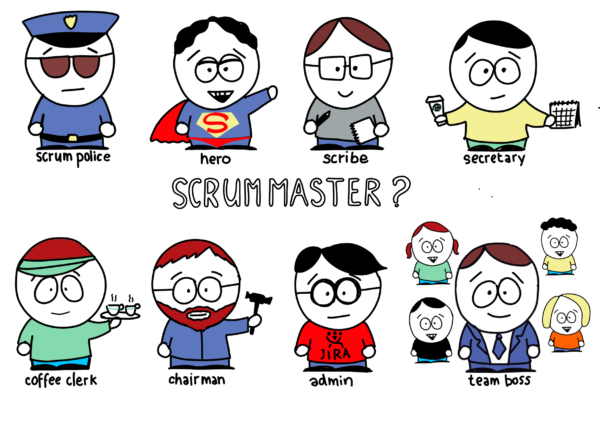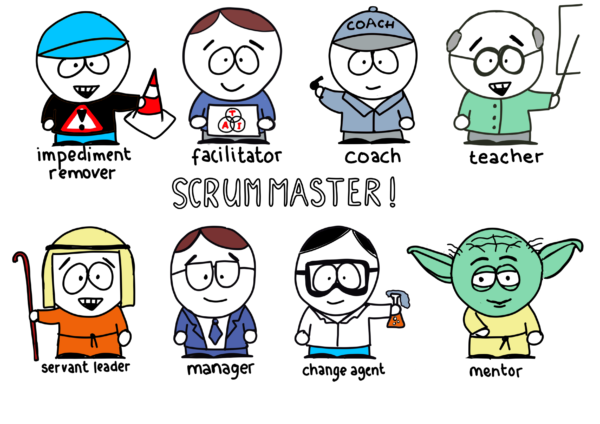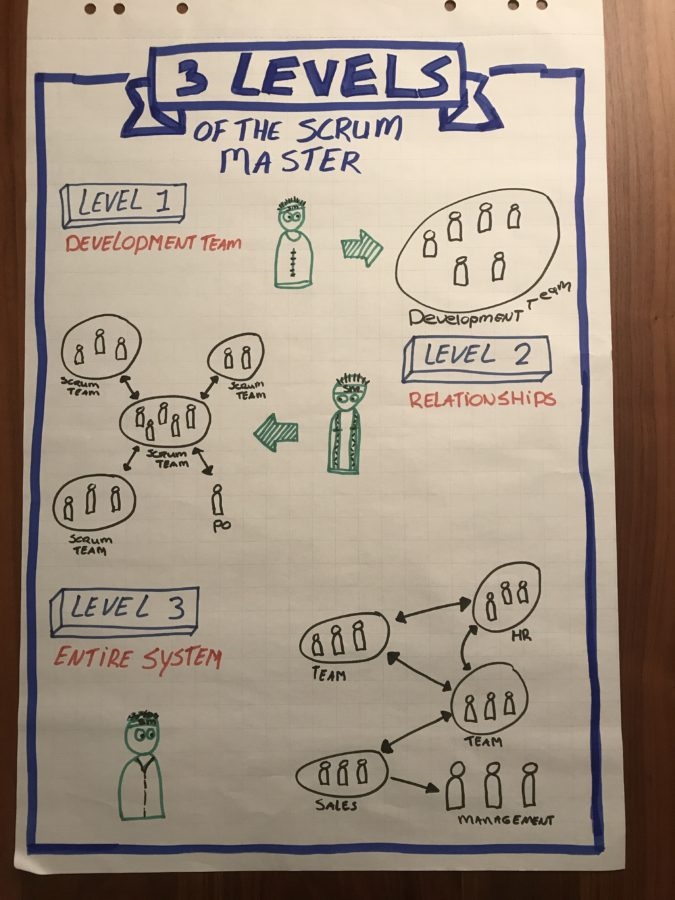On September 27th I provided a presentation at the Agile Leadership Day (ALD) in Zurich, Switzerland. The topic of my presentation was “The Scrum Master as the Change Leader“. In the weeks before the presentation I already promoted the topic by which I caused quite a few questions/comments. Not wanting to spoil my key message, I promised to explain the title afterwards. So here it is, the blog post in which I’ll explain my view on the Scrum Master as the change leader.
Let me start with a confession. My original title was “The Scrum Master as a Change Agent”. This is one of the stances I describe in the whitepaper “The 8 Stances of a Scrum Master“. However, in the 5 year history of the ALD not even one presentation had been accepted with “Scrum” as a topic. To increase my chances of being accepted, I changed “change agent” into “change leader”. Sounds much more like an ALD-presentation. And hoorah! My talk got accepted (not sure if this was the reason…)
But, I couldn’t have chosen a better title.
The Scrum Master SHOULD act as the change leader!
In this blog post I won’t describe all the misunderstood and preferred stances of a Scrum Master in detail. I’ll only briefly explain the different stances. I’ll focus on my main message why the Scrum Master should be a change leader. Please read my whitepaper if you want to know more about the other stances.
The 8 Common Misunderstandings

The Scrum Master role is often misunderstood and considered as someone acting as a…
- Scrum police officer. Rigorously following the rules of Scrum without any empathy for the team’s current situation and context. If you’re not acting according the Scrum Guide you’re doing it wrong. Period.
- Hero. It’s a bird. It’s a plane. It’s the Super Scrum Master!!! Solving all your impediments before it actually even was an impediment. The hero is addicted to the adrenaline of solving “problems” . It’s not about the team, is about increasing his status as a hero.
- Scribe. Taking notes during every Scrum event. Writing down the entire sprint plan, daily plan, refinement discussions and Retrospective commitments.
- Secretary. Planning all the Scrum events in everyones agenda. Responsible for keeping the teams schedule with holidays and days off up-to-date.
- Coffee clerk. There’s nothing wrong with getting coffee for your team members. That’s even very collegial. But if you’re main purpose during the day is providing the team with coffee… than you’re missing the point of being a Scrum Master.
- The chairman. Every morning the team provides a status update to the chairman of the daily Scrum. This offers the Scrum Master the necessary information to write the daily status-report to his/her superiors.
- The (tooling) admin. If you need a change in JIRA, TFS or any other tool: the Scrum Master is you’re friend. He (or she) knows every workflow by heart.
- Team boss. The so-called “servant-leader”, but actually just the boss of the team. The boss who hires and fires. The boss who decides if someone deserves a salary-increase.
The Result?

If you fulfil the role of the Scrum Master according to the 8 misunderstood stances, chances are you’ll end up as a Scrum Team with…
- Low level of self-organisation. It’s up to the Scrum Master to fix all (potential) problems, to divide to work amongst the team members and to determine the “ideal” team composition…
- A team that doesn’t own the process. The team only uses Scrum because you as a Scrum Master are so enthusiastic about it. Probably the Daily Scrum will only happen when the Scrum Master is present…
- Zombie-Scrum. At first sight Zombie Scrum seems to be normal Scrum. But it lacks a beating heart. The Scrum teams do all the Scrum events but a potential releasable increment is rarely the result of a Sprint. Zombie Scrum teams have a very unambitious definition of what ‘done’ means, and no drive to extend it. They see themselves as a cog in the wheel, unable and unwilling to change anything and have a real impact: I’m only here to code! Zombie Scrum teams show no response to a failed or successful Sprint and also don’t have any intention to improve their situation. Actually nobody cares about this team. The stakeholders have forgotten the existence of this team long time ago.
The 8 Preferred Stances of a Scrum Master

I prefer fulfilling the Scrum Master role being a(n)…
- Impediment Remover solving blocking issues to the team’s progress, taking into account the self-organizing capabilities of the Development Team.
- Facilitator by setting the stage and providing clear boundaries in which the team can collaborate. Facilitating the Scrum events ensuring they’ll achieve the desired outcome. Even more important: facilitate the necessary transparency by which true inspection and adaption can occur.
- Coach coaching the individual with a focus on mindset and behaviour, the team in continuous improvement and the organisation in truly collaborating with the Scrum Team.
- Teacher to ensure Scrum and other relevant methods are understood and enacted.
- Servant Leader whose focus is on the needs of the team members and those they serve (the customer), with the goal of achieving results in line with the organisation’s values, principles, and business objectives.
- Manager responsible for managing impediments, eliminating waste, managing the process, managing the team’s health, managing the boundaries of self-organisation, and managing the culture.
- Change Agent to enable a culture in which Scrum Teams can flourish.
- Mentor that transfers agile knowledge and experience to the team.
The 3 Levels of a Scrum Master
The Scrum Guide offers a clear description of the services a Scrum Master provides to the Development Team, Product Owner and the organization. Some examples of these services are coaching the Development Team in self-organization and cross-functionality, helping the Product Owner finding techniques for effective Product Backlog management and supporting the organization in its Scrum adoption.
In the book “The Great Scrum Master” the author Zuzana Sochova uses the perspective of the 3 levels of a Scrum Master. I consider this perspective complementary to the description the Scrum Guide gives. In the InfoQ article “Q&A on The Great Scrum Master” Zuzana offers a great description of these 3 levels:

“The first is MyTeam. Scrum Masters where are almost like team members. They look at things from the development team perspective: Explaining different agile practices, facilitating Scrum meetings, help removing impediments, coaching the team, and making the team great.
The second level is Relationships. Where Scrum Masters are looking at team from much higher perspective, focusing their teaching, mentoring, facilitation, and coaching skills to improve relationships between team and other entities. Coaching the Product Owner to build a great vision, and facilitating conversation with other teams. Building a bigger eco-system which is self-organized.
Finally, the third level is the Entire System. Scrum Masters shall look at the company as a system, from ten thousand feet distance. Searching for organizational improvements. They shall become servant leaders, helping others to become leaders, grow communities, and heal relationships. Bring the agile values to the organizational level.”
By fulfilling the Scrum Master role according to the 8 preferred stances, you’ll provides services to the Development Team, Product Owner and organization. Also you will grow your role towards the three levels of a Scrum Master from “my team” to “relationships” towards the “Entire System”.
A Scrum Friendly Culture
“A good Scrum Master helps a Scrum Team survive in an organisation’s culture. A great Scrum Master helps change the culture so Scrum Teams can thrive.” – Geoff Watts in Scrum Mastery
I truly love this quote by Geoff Watts. It describes the difference between good and great Scrum Masters. The Scrum Master should act as a change agent to promote a culture where Scrum Teams can thrive.
I consider a Scrum-friendly culture to be an environment that…
- Values team success over individual success
- Promotes continuous improvement and experimentation
- Encourages “Agile contracts”
- Supports stable team composition
- Rewards behaviour over achievements
The Scrum Master as the Change Leader
It’s up to the Scrum Master to help create such a Scrum-friendly culture. The good news is… the Scrum Master has the perfect position to move the organisation towards an environment where the Scrum Team can thrive. The Scrum Master can enable change from the inside out. Being part of a Scrum Team, the Scrum Master knows precisely what needs to be changed and more important: why change is necessary. The Scrum Master can facilitate conversations and collaboration with other Scrum Teams. Together with other Scrum Masters (s)he can ignite the necessary organisational changes by influencing the system from the inside out. So from the perspective of the Scrum Team, the Scrum Master is the change leader.
The chances of a successful Scrum adoption will increase drastically, when you consider your Scrum Masters as the true “inside out” Change Leaders!
Encourage the Scrum Master to talk to different departments that need to be changed in order to succeed with Scrum. As a Scrum Master you should collaborate with people from the HR, Finance and Sales departments. The Scrum Master really knows what’s going in his/her Scrum Team. The Scrum Master should therefore show leadership and influence the organisational system from the perspective of the Scrum Team.
This is also why I don’t believe in rotating the Scrum Master role and I don’t encourage being a part-time Scrum Master. You’ll probably only act on team-level while the real success will be achieved by setting up relationships with people around the team and influencing the organisations system as a whole.
If you have an “Agile Transformation Team” within your organisation, make sure to collaborate with them. The organisation probably also has a bunch of Agile Coaches: great! Regularly catching-up with them is also highly recommended. Just make sure there isn’t a hierarchal difference between the Agile Coach and the Scrum Master. There’s only a different perspective on how to create a Scrum-friendly environment (if that’s the goal of the Agile Coach). Scrum Masters use an “inside out” approach, Agile Coaches use an “outside in” approach. Guess what approach I prefer… But I’ll write more on the difference between Scrum Masters an Agile Coaches the upcoming period, stay tuned!
Closing
In this blog post I’ve shared my view on the Scrum Master as the Change Leader. I’ve briefly described the common misunderstandings and the preferred stances of the Scrum Master. I’ve shared the services a Scrum Master provides for the Development Team, Product Owner and organisation, and the 3 levels that can be considered as a growth path for the Scrum Master.
A Scrum Master should try to create a culture in which Scrum Teams can thrive. This is a culture that values team success, promotes experimentation, encourages Agile contracts, supports stable team composition and rewards behaviour over achievements. It’s up to the Scrum Master to help create such a Scrum-friendly culture.
Being part of the Scrum Team, the Scrum Master can enable the necessary changes from the inside out. So from the perspective of the Scrum Team, the Scrum Master is the change leader. If you want to drastically increase the chances of a successful Scrum adoption:
Consider your Scrum Masters as the true “inside out” Change Leaders!
Business & Finance Articles on Business 2 Community
Author: Barry Overeem
Barry is a freelance Scrum Master and Professional Scrum Trainer at Scrum.org. He’s an active member of the Scrum community and shares his insights and knowledge by speaking at conferences, facilitating workshops and writings blog posts.
As a Scrum Master, Barry has a focus on creating successful teams with strong skills in self-organization and cross-functionality and a… View full profile ›
(437)